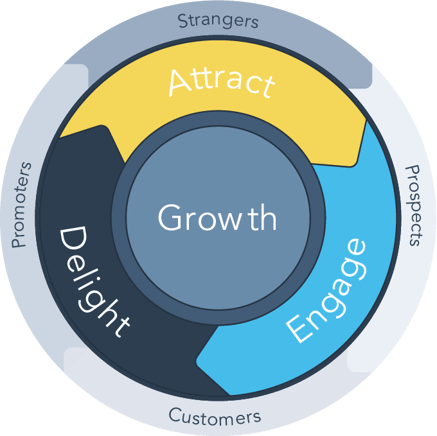Have you ever watched a video and felt so captivated by its message that you couldn't help but share it with everyone you know? That's the power of video marketing. With the rise of social media and the increasing popularity of video content, businesses are turning to video marketing as a way to reach their target audience.
However, creating a video marketing strategy can be overwhelming, especially if you're new to the world of video production and marketing. There are so many factors to consider, from choosing the right platform to crafting a compelling message that resonates with your audience.
But fear not, with a little bit of guidance, you can create a video marketing strategy that not only engages your audience but also drives conversions.
In this article, we'll guide you through the process of building a compelling video marketing strategy that will help you achieve your business goals.
|
Video Marketing Video marketing is a type of online marketing where you use video content to promote your products and services. |
What is Video Marketing?
Video marketing is the use of videos to promote and market a product or service. It is a powerful way to engage with your audience, build brand awareness, and increase conversions. According to a report by HubSpot, 91% of businesses use video as a marketing tool, and 85% of businesses that use video see an increase in their website traffic.
Video marketing can take many forms, including product demos, brand videos, explainer videos, testimonials, and more. The key is to create videos that are engaging, informative, and valuable to your audience.
One of the main advantages of video marketing is its ability to convey complex messages in an easy-to-understand format. Videos can also evoke emotions and create a connection with your audience, which can lead to increased brand loyalty and trust.
video marketing is an effective way to reach your target audience and achieve your marketing goals. It can help you stand out in a crowded market, build brand awareness, and drive more conversions and sales.
The Importance of Video Marketing
Video marketing has become an essential component of any successful marketing strategy.
With more than 80% of all internet traffic being video content, it’s clear that consumers prefer watching videos over reading text. Video marketing can help businesses reach a wider audience and engage with them more effectively.
Here are some of the key benefits of incorporating video into your marketing strategy:
-
Increased engagement: Videos are more engaging and memorable than other forms of content.
-
Better storytelling: Videos can tell a story in a way that text simply can't. They allow businesses to showcase their products or services in action, demonstrate their expertise, and build emotional connections with their audience.
-
Improved SEO: Videos can improve your search engine rankings by keeping visitors on your website for longer. When visitors spend more time on your site, search engines see it as a signal that your content is valuable and relevant, which can lead to higher search rankings.
-
Increased conversions: Video marketing can increase conversions by up to 80%. Videos can educate your audience about your product or service, build trust and credibility, and provide a more personalized experience.
-
Better customer experience: Videos can help businesses communicate more effectively with their customers. They can answer frequently asked questions, provide product demos, and give customers a behind-the-scenes look at their business.
How to Create a Video Marketing Strategy
Creating a video marketing strategy may seem daunting, but it doesn't have to be. By following these steps, you can create a video marketing strategy that effectively reaches and engages your target audience.
1. Understand your audience
The first step in creating a successful video marketing strategy is to understand your audience. Who are they? What are their pain points, goals, and interests? What motivates them to engage with your brand?
Take the time to gather information about your target audience through market research, customer feedback, and social media insights. Use this data to create buyer personas, which are detailed profiles of your ideal customers. This will help you tailor your videos to their specific needs and preferences.
For example, if your target audience is mainly comprised of tech-savvy millennials, you might consider creating videos that are fast-paced, visually appealing, and shareable on social media.
On the other hand, if your audience is predominantly made up of older professionals, you might focus on creating educational videos that offer valuable insights and thought leadership on industry-specific topics.
Understanding your audience is key to creating videos that resonate with them and ultimately drive conversions.
2. Establish a Purpose for Your Videos
Once you have a clear understanding of your target audience, it's time to define the purpose of your videos. What do you want to achieve with your video marketing efforts? Is it to raise brand awareness, generate leads, educate your audience, or increase sales?
By establishing a clear purpose for your videos, you can create content that aligns with your business goals and resonates with your audience. This will make it easier to measure the success of your video marketing efforts and optimize your strategy over time.
For example, if your goal is to generate leads, you might create a series of educational videos that address the common pain points of your target audience. Alternatively, if your goal is to increase sales, you might create product demo videos that showcase the features and benefits of your products.
It's important to keep your purpose in mind when creating your video content. Every video you produce should have a clear call-to-action (CTA) that aligns with your business goals. This could be anything from subscribing to your channel, downloading an ebook, or making a purchase.
By establishing a clear purpose for your videos, you can create content that is not only engaging but also helps you achieve your business objectives.
3. Set up a timeline
To set up a timeline, start by determining when you want to release your videos and how frequently you want to release them. Consider your audience and their viewing habits, as well as any upcoming events or promotions that you want to promote through your videos.
It's also important to allocate enough time for each stage of the video production process, including planning, scripting, filming, editing, and distribution. Make sure you have a realistic timeline that allows for any unexpected delays or revisions.
One effective way to set up a timeline is to use a content calendar. A content calendar is a tool that helps you plan and organize your content, including your video marketing efforts. You can use it to schedule the release of your videos, plan your video topics, and assign tasks to your team members.
4. Select a video distribution platform
Once you've created your video content, you'll need to distribute it effectively to reach your target audience. There are many different video distribution platforms available, and it's important to choose the ones that align with your goals and audience.
YouTube is the most popular video platform and a great place to start. With over two billion monthly active users, it offers a massive audience and the ability to reach a global audience. Other popular platforms include Vimeo, Facebook, Instagram, and LinkedIn.
When selecting a platform, consider factors such as audience demographics, user behaviour, and the type of content that performs well on each platform. It's also important to consider the platform's advertising options, analytics, and customization options.
One of our clients, a B2B software company, initially focused solely on distributing their videos through LinkedIn. However, after conducting research, we discovered that their target audience was also active on YouTube. By expanding their distribution strategy to include
5. Choose a video style
Choosing the right video style is crucial to ensuring that your message is delivered effectively to your target audience. There are several types of video styles to choose from, including:
- Live-action videos: These videos feature real people and real settings, and are great for conveying authenticity and building trust with your audience.
- Animated videos: Animated videos can be a fun and creative way to engage your audience and explain complex concepts in a simple and easy-to-understand way.
- Whiteboard videos:: Whiteboard videos use a hand-drawn animation style to tell a story or explain a concept. They can be a great way to hold your audience's attention and keep them engaged.
- Screencast videos: Screencast videos are recordings of computer screens, and can be useful for demonstrating software or teaching a specific skill.
When choosing a video style, consider your audience, your message, and your brand's personality. It's important to choose a style that aligns with your brand and resonates with your audience.
For example, when Dropbox created a video to explain its product, it chose an animated style that conveyed its brand's fun and creative personality. The video went viral and helped to boost Dropbox's user base significantly.
In the end, choosing the right video style can make all the difference in the success of your video marketing campaign. Take the time to choose a style that aligns with your brand and effectively delivers your message to your target audience.
6. Track your progress
Once your video marketing strategy is implemented, it is crucial to track your progress to ensure that it is meeting your goals and making a positive impact on your business.
One of the best ways to track progress is to use analytics tools provided by your video distribution platform. These tools can provide insights into how your videos are performing, including views, engagement, and conversions.
Another way to track progress is to set up key performance indicators (KPIs) that align with your goals. For example, if your goal is to increase website traffic, you may want to track the number of website visits generated by your videos. If your goal is to increase conversions, you may want to track the number of leads or sales generated by your videos.
Regularly reviewing your analytics and KPIs can help you identify areas for improvement and make data-driven decisions for future video marketing efforts.
Your Video Marketing Guide Through the Flywheel
Creating a video marketing strategy isn't just about producing great content. It's also about using that content strategically to move your audience through the marketing funnel, from awareness to conversion and beyond.
That's where the inbound marketing flywheel comes in. This model emphasizes the importance of customer delight in driving growth and retention. Here's how you can use video at each stage of the flywheel:

Attract
In the attract stage, your goal is to grab the attention of potential customers and draw them to your brand. Video can be a powerful tool for doing just that. Consider creating videos that address your target audience's pain points, answer common questions, or provide valuable information on topics related to your business.
For example, a fashion retailer might create a video series showcasing the latest trends for each season, while a software company might create explainer videos that break down complex features into easy-to-understand concepts.
Convert
Once you've attracted potential customers to your brand, the next step is to convert them into leads. Video can be a highly effective tool for driving conversions, whether that means encouraging viewers to sign up for your newsletter, download a white paper, or register for a free trial.
Consider adding video CTAs to your website and landing pages, and creating video content that addresses common objections or concerns your potential customers might have. This can help build trust and establish your brand as a credible authority in your industry.
Close
In the close stage, your goal is to turn leads into customers. Video can be a powerful tool for closing deals and helping potential customers make informed purchasing decisions.
Consider creating product demo videos, customer testimonials, or case studies that highlight the benefits of your product or service. You might also consider creating video content that addresses common questions or objections your potential customers might have.
Delight
Finally, in the delight stage, your goal is to keep your customers happy and engaged with your brand. Video can be a highly effective tool for building customer loyalty and driving repeat business.
Consider creating video content that provides tips and tricks for using your product or service, or that showcases new features or updates. You might also consider creating video tutorials or webinars that provide additional value to your existing customers.
Action
In conclusion, video marketing has become a crucial component in any successful marketing strategy. By leveraging the power of video, businesses can increase brand awareness, engage with their audience, and drive more conversions.
To create a compelling video marketing strategy, it is essential to understand your audience, establish a purpose for your videos, set up a timeline, select a video distribution platform, choose a video style, and track your progress. By following these steps, you can create a comprehensive video marketing plan that aligns with your business goals and resonates with your audience.
As a marketing leader, it's time to incorporate video into your overall marketing strategy. Start by identifying the types of videos that align with your brand and audience, and then develop a plan to create and distribute them. Don't hesitate to seek the assistance of a professional video marketing agency like Fine Media to guide you through the process and ensure you create compelling videos that resonate with your target audience.



